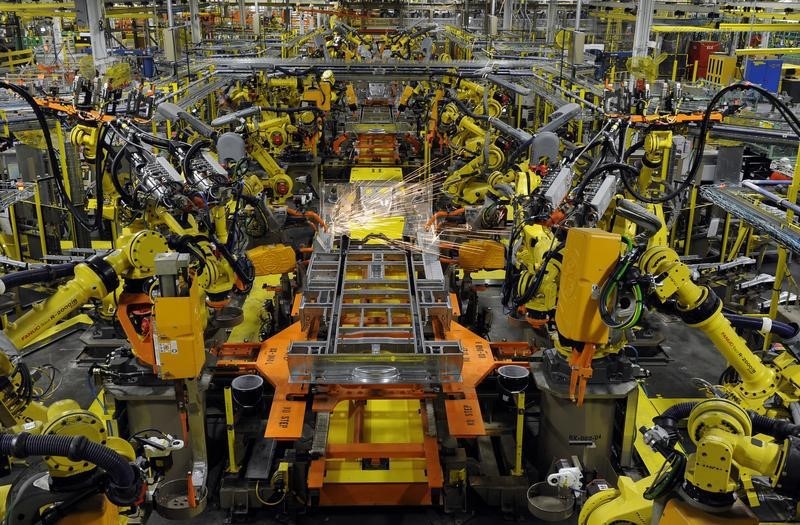By Jason Lange
(Reuters) - While the acceleration in U.S. hiring last month was surprisingly sharp and broad-based, a sector that has had a particularly rough 21st century - manufacturing - offered one of the brightest signals.
U.S. factories added 28,000 jobs in November, the most in a year, according to government data released on Friday. Manufacturers also raised the average work week for their production workers to 42.2 hours, returning to levels reached earlier in 2014 that were the highest since the end of World War Two.
"We are definitely in growth mode," said Lee Eilers, the chief executive at Marion Mixers, an Iowa maker of giant mixing machines used in the production of everything from pancake mix to dishwasher soap.
The firm has added three welders this year, bringing its head count to 44, and Eilers plans to hire six more people in 2015, although he said there are enough available workers in Marion, Iowa, that he doesn't have to pay signing bonuses.
After hemorrhaging hundreds of thousands of jobs during the first decade of this century, the U.S. factory sector is now an example of America's economic upswing even as a slowing global economy and a stronger dollar clouds the outlook for exporters.
Employers added 321,000 workers to their payrolls last month, with strong gains in most sectors, from construction and retail to finance.
In manufacturing, the rise in hours worked was particularly illustrative because it could signal further hiring ahead for a sector that has added about 700,000 jobs over the last five years but that remains 5 million jobs in the hole in the 21st century.
"Manufacturers are getting just about all they can out of their current workforce," said Russell Price, an economist at Ameriprise Financial in Troy, Michigan. "As long as they see new orders come in the door, they're going to have to hire more employees to satisfy those orders."
While part-time employment has climbed significantly since the 2007-09 recession, a brisker pace of business in November led businesses across the economy to give their workers more hours as well. Among all private sector workers, the workweek in November was its longest since May 2008.
Still, factories are also good examples of the U.S. economy's inability in recent years to generate a faster pace of wage gains. Manufacturing wages grew a tepid 1.5 percent in the 12 months through November.
While a top Federal Reserve official said this week that faster wage growth could be around the corner, Friday's data suggested that manufacturers and other firms still had leverage in setting wages even as they expanded their payrolls. Across the private sector as a whole, average hourly earnings were up just 2.1 percent over the past year.
Grammer Inc., a subsidiary of Germany's Grammer AG (DE:GMMG), opened a factory in Lee County, Mississippi, in September and plans to hire 650 workers to make car consoles and seats for heavy machinery. The plant currently employs 92 workers who were selected out of a torrent of applicants from the region, which suffered throughout the 1990s and early 2000s as the furniture manufacturing industry shrank.
When Grammer's hiring began in the spring, the agency in charge of the process had to cap the number of applications at 5,000.
(Reporting by Jason Lange in Washington; Additional reporting by Ann Saphir in San Francisco, Michael Flaherty in Tupelo, Miss., and Herb Lash in New York; Writing by Jason Lange; Editing by Paul Simao)
